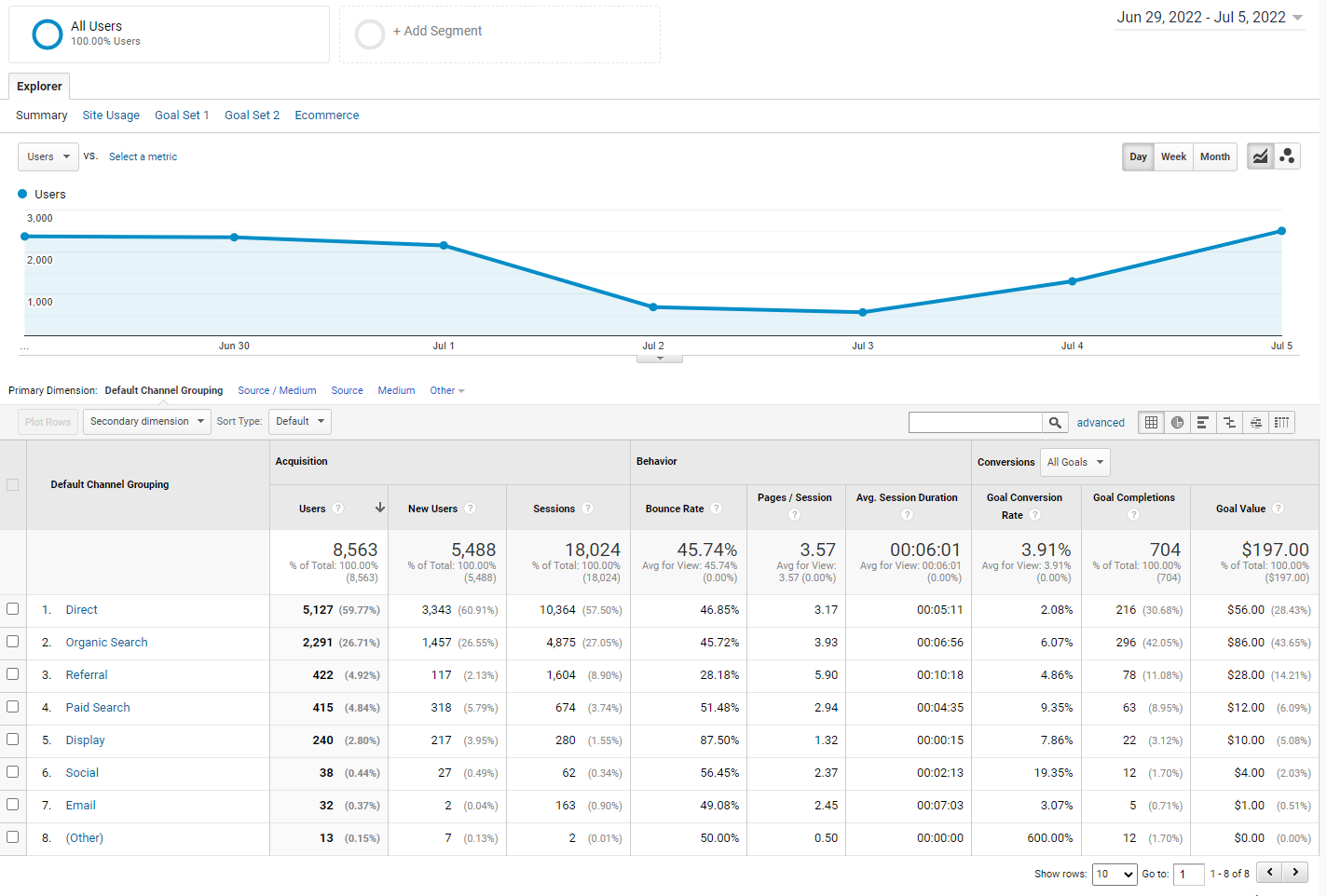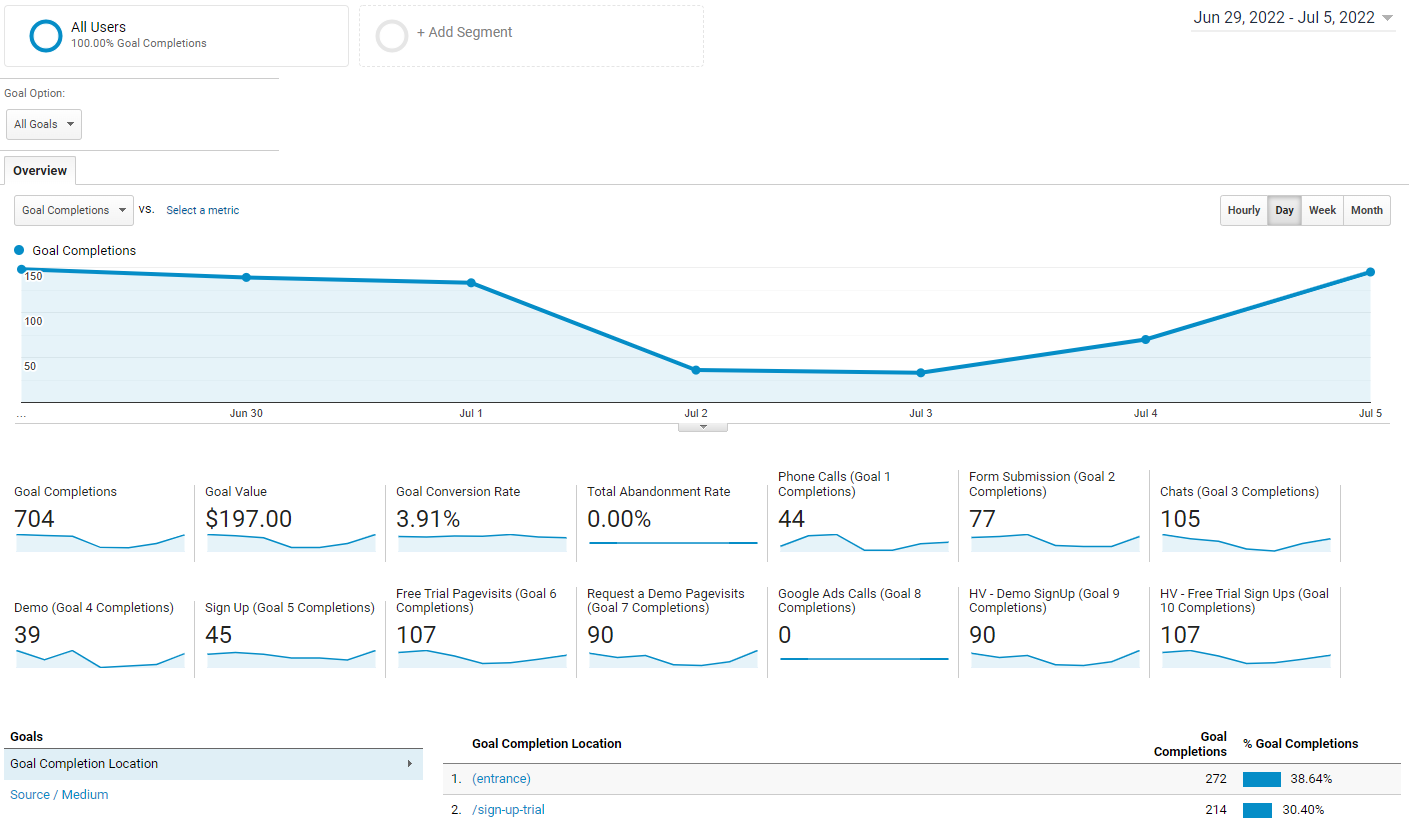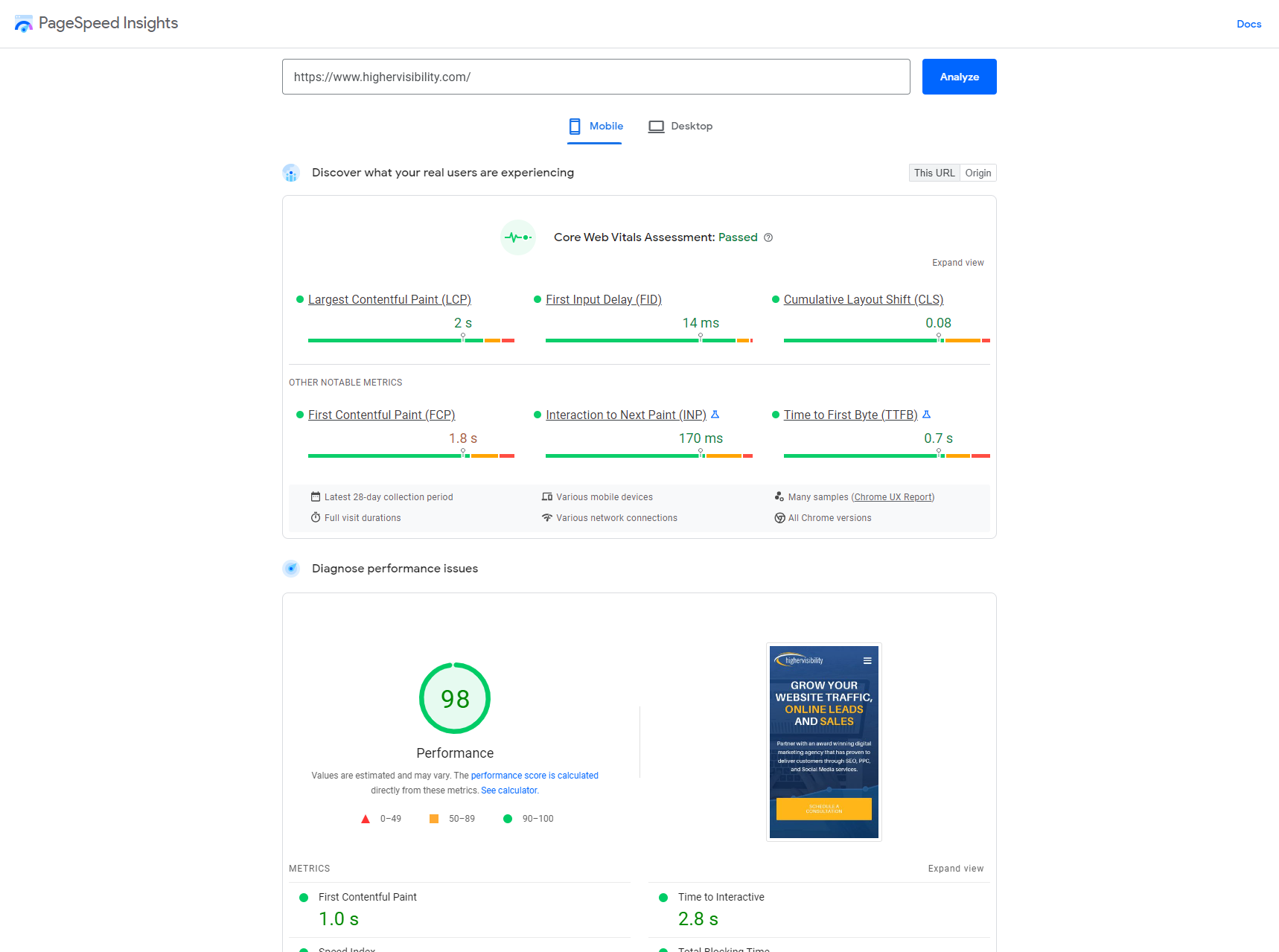If you’re managing SEO for clients, then you know how important it is to deliver accurate and insightful reports. You’ve done the work, now you have to show it.
Your clients rely on you to give them the relevant information they need to make informed decisions about their marketing efforts going forward. The SEO report is their (and your) roadmap.
Getting it right every time is a matter of creating a system you can consistently mimic for each client.
So, what goes into making perfect SEO reports? These are the seven essential elements.
1. Traffic: Sources
Is increasing organic traffic to their website your client’s main goal? Start your SEO reports with traffic.
If using Google Analytics, you’ll also want to utilize the Source/Medium section of the traffic report for this part of the report. It will provide you with more information on where your visitors are coming from, helping your client determine where they should spend their time and money.
Ensure that mobile sources are also included in this part of the report since mobile phones made up about 63% of organic search engine visits in 2021.
This part of the report will look something like the image below. To get there quickly, go to Acquisition > All Traffic > Channels.
 Screenshot from Google Analytics, July 2022
Screenshot from Google Analytics, July 20222. Conversion Rate & Progress On Goals
Massive flows of site traffic are great, but if you don’t know what your visitors want or how they want to be engaged with your content, then even all the traffic in the world won’t help you get very far.
In other words, if you can’t convert your visitors into customers, no amount of traffic will help you.
Conversion rate is probably one of the most important key performance indicators (KPIs) to your clients, so tuck this near the front of your report for easy access.
Once you’ve discovered the conversion rate, you’ll be more equipped to explain what comes next in the report and describe why they’re seeing certain insights and data points.
To demonstrate conversion rate to a customer, select certain goals that you want to track as “conversions.”
In this example, one non-profit client used landings on their “Thanks for the donation!” page to track completed donations.
Google Analytics will count each landing as a donation, helping to complete the goals on the Goal Completion portion.
To get to Goal Completion, go to Conversions > Goals > Overview.
For example:
 Screenshot from Google Analytics, July 2022
Screenshot from Google Analytics, July 20223. Top Performing Pages
You probably know where your visitors are coming from, but it’s vital to learn where they’re heading on your site.
If someone arrives at your site organically via Google, that’s awesome; however, if you know they clicked on your most recent blog post, that is way more valuable.
You always want to include top-performing pages so your client knows what’s working and what isn’t. There are usually lessons they can learn from pages that are doing well and apply them to pages that could use help to attract (and keep!) traffic.
One way to pull data from Google Analytics to illustrate this is via the Landing Pages section.
To get there, first, go to Behavior, then Site Content, and Landing Pages. You’ll see which URLs are hot and which ones aren’t quite.
4. Page Speed Insights
Take a quick break from Google Analytics for this part and head over to a tool called PageSpeed Insights from Google. It’s a completely free tool that will show your clients how fast their pages are loading and any performance issues they may be able to fix to improve their results.
Sometimes, it’s something as small as a video with a file size that’s too large. This simple quick fix can get your pages up quickly.
Page speed hasn’t always been a high priority, but as user expectations are becoming more and more demanding with their online experiences, getting your pages to load quickly is paramount to keeping visitors on your site.
Google even tells us that the probability of someone bouncing off a website increases by 32% if load time goes from a one-second load to a three-second load.
 Screenshot from PageSpeed Insights, July 2022
Screenshot from PageSpeed Insights, July 20225. Bounce Rate And Dwell Time
Knowing that visitors have come to your site, clicked on certain pages, and in some cases, converted is incredibly helpful.
But to complete the full picture, your client needs to know how long people are staying on their site and how many of them are clicking away after the first landing page.
Dwell time is the time someone spends on a website page when they come from an organic search. Are they exploring other pages from there, or looking for a quick answer?
A high bounce rate isn’t always a bad thing, though.
If their landing page was one chock full of internal links to other pages on your site and they bounced quickly, it probably means they’ve moved on to exploring these outbound links.
In this section, focus on bounce rate for core site pages with rich content like videos. They should be staying for a while to consume the content.
6. Rankings And Backlinks
Backlinks can be powerful tools for websites struggling to make progress in their SEO rankings.
You can find many tools to track links you have, which is helpful because it can identify potential SEO opportunities.
If you’ve helped your client get backlinks as part of your SEO strategy, this section of the report is where you’ll show their impact.
As for rankings, you should include where the site ranks for keywords that you’ve determined are most valuable to the client.
Just keep in mind that rankings are no longer the end-all and be-all of SEO – we now know that countless factors, such as history, user geographic location, and personalization can all impact rankings.
7. Recommendations And Next Steps
Recommendations may not be the first thing that springs to mind when underneath a mountain of data, but recommendations and next steps are ultimately what the client is looking for at the end of this report.
Your next steps and recommendations will use all of the data you’ve pulled and apply them to the strategy moving forward so there’s an actionable plan to improve the shortcomings and maximize success.
A Final Note
The best way to show your progress through your SEO reports is to compare results from previous report periods.
Choose whichever frequency works for you and your client – quarter over quarter, year over year, etc. – and use it consistently to show growth.
Put all of these aspects together, and you’ll nail the perfect SEO report every time.
More Resources:
- SEO Reports: Which Metrics Matter & How To Use Them Well
- 7 Common Enterprise SEO Reporting Mistakes To Avoid
- The State of SEO Report
Featured Image: fizkes/Shutterstock




